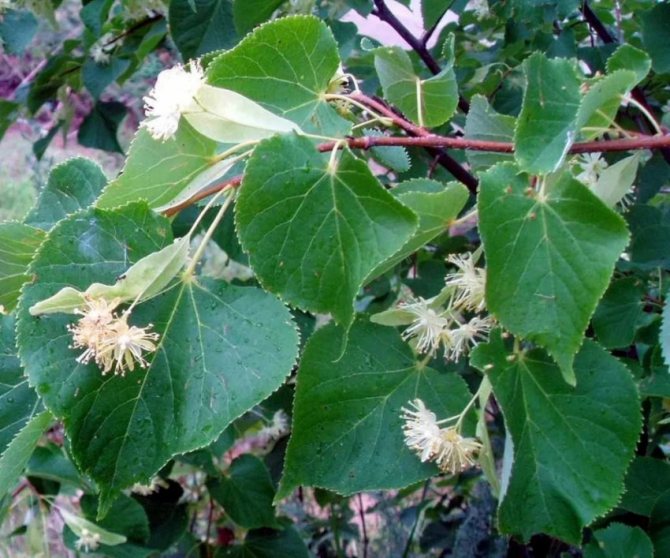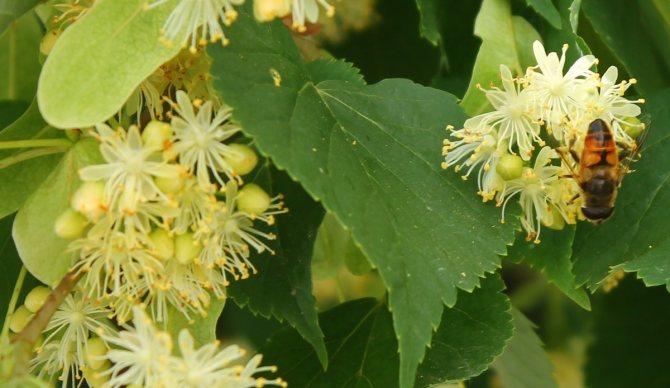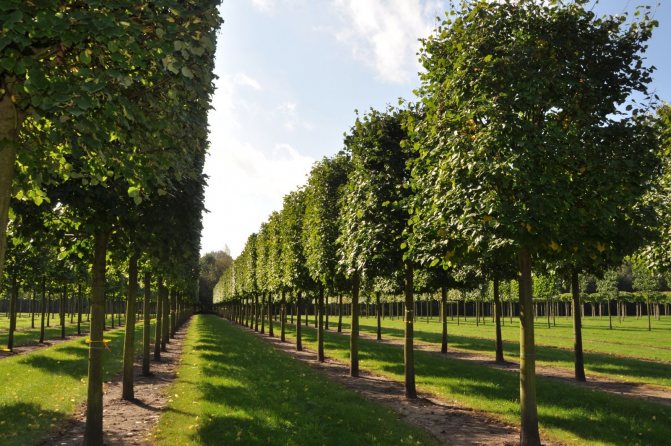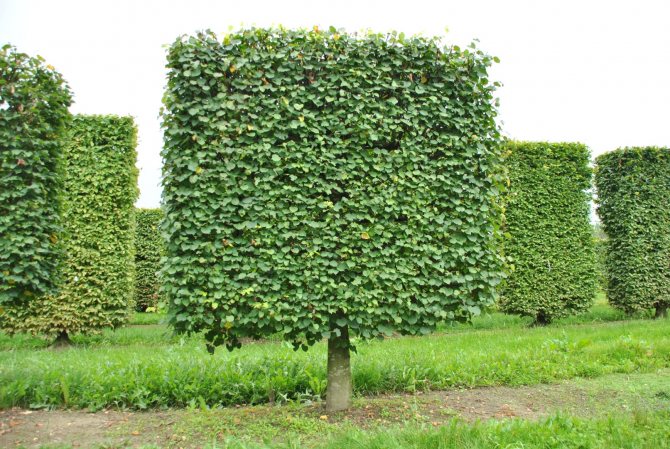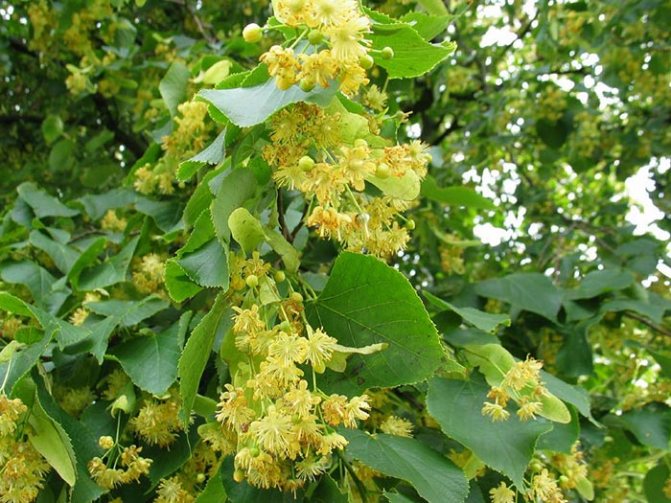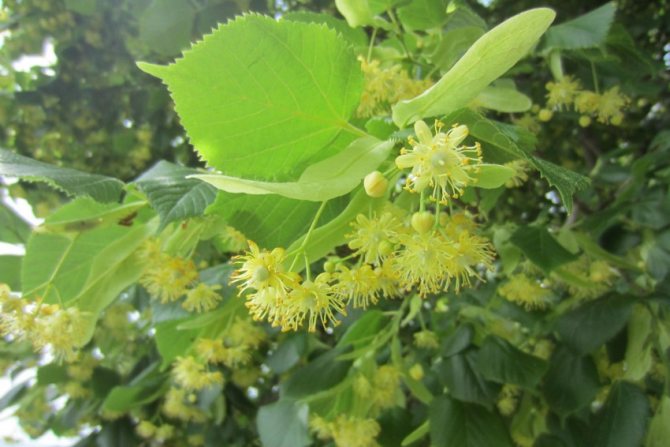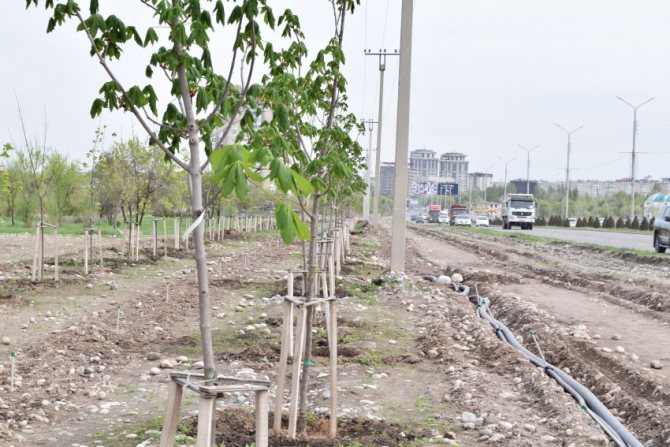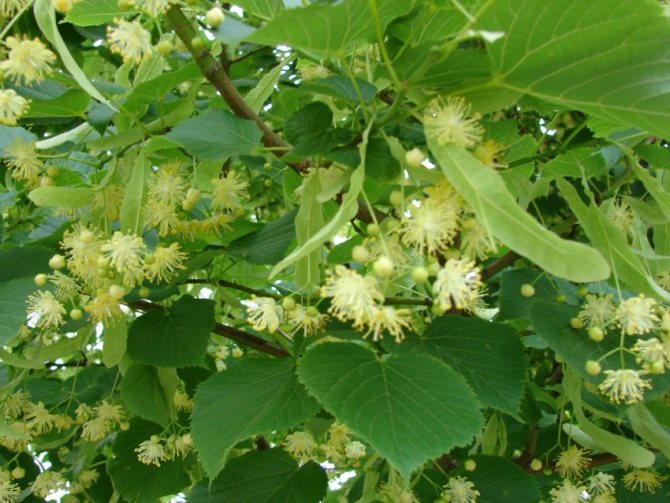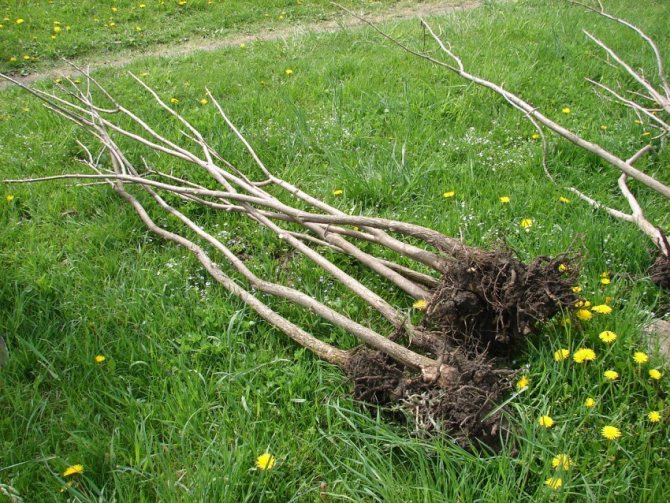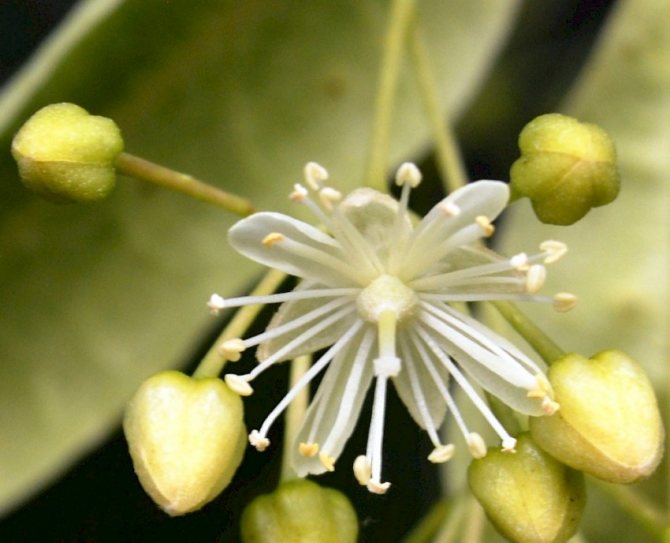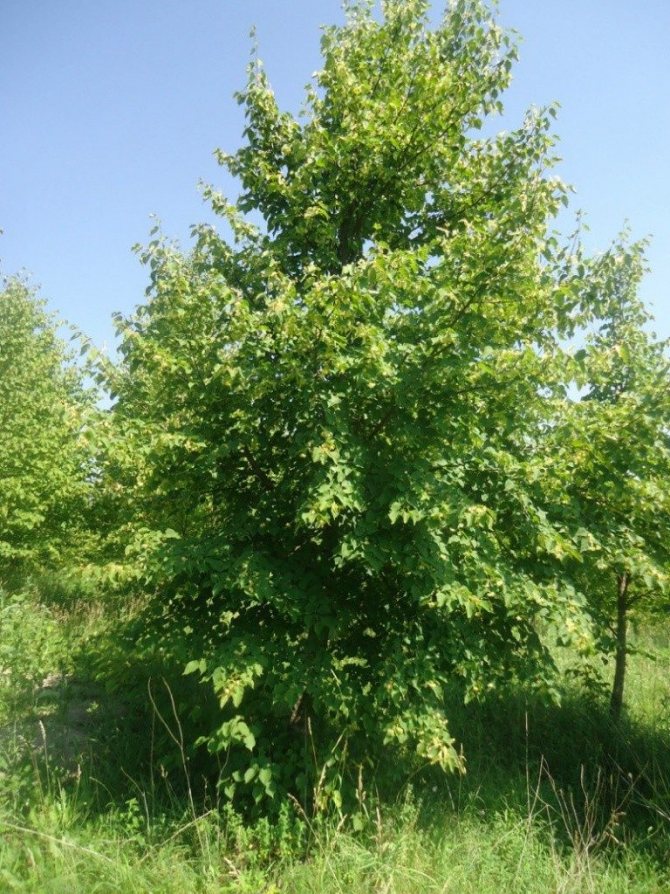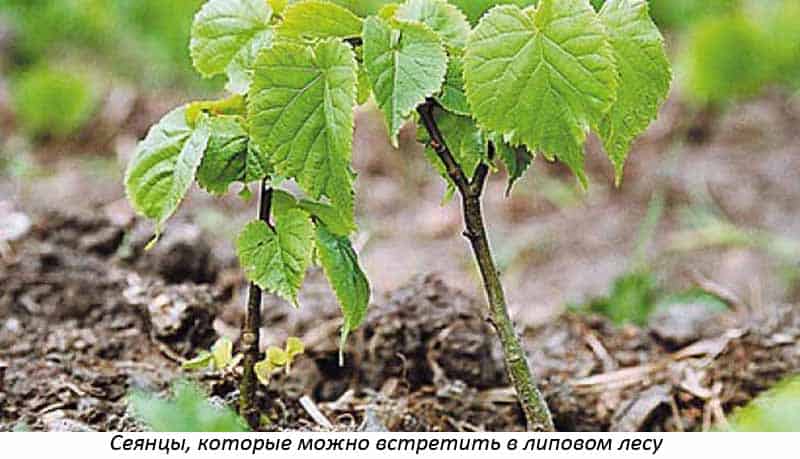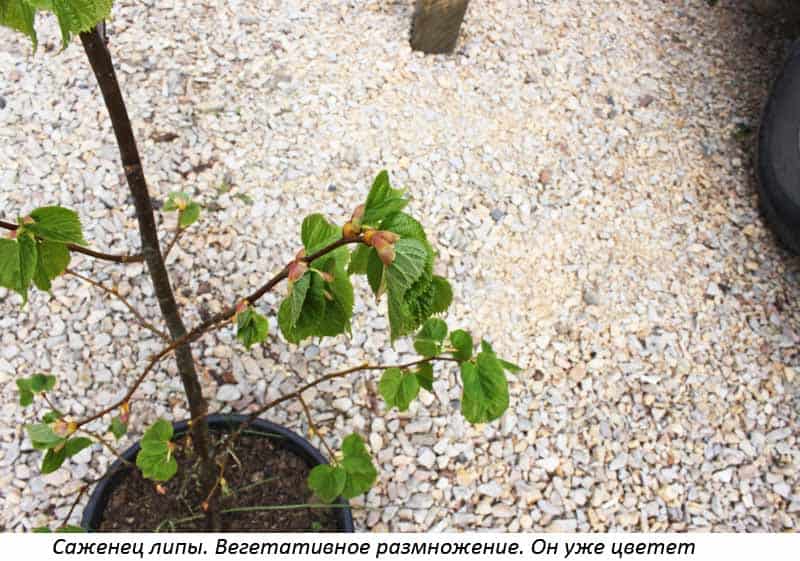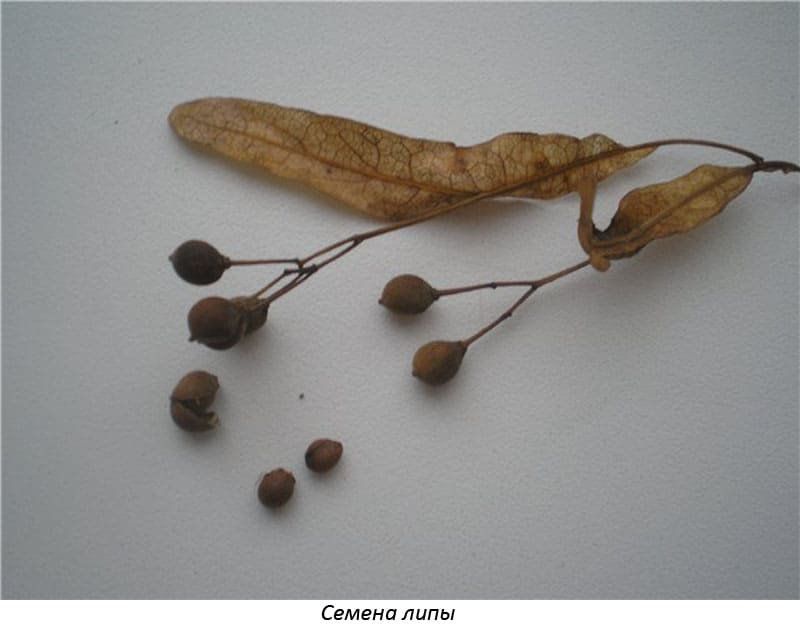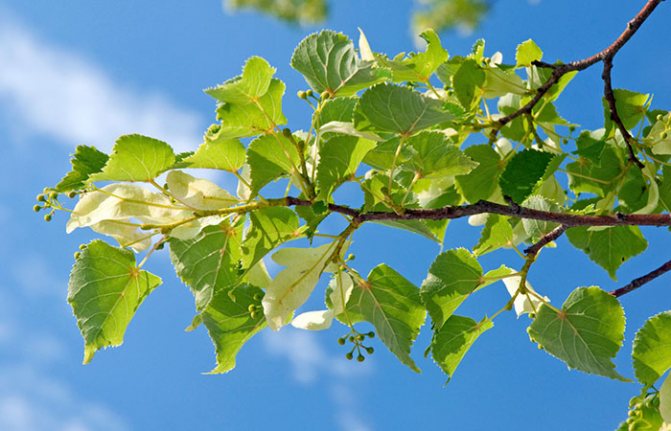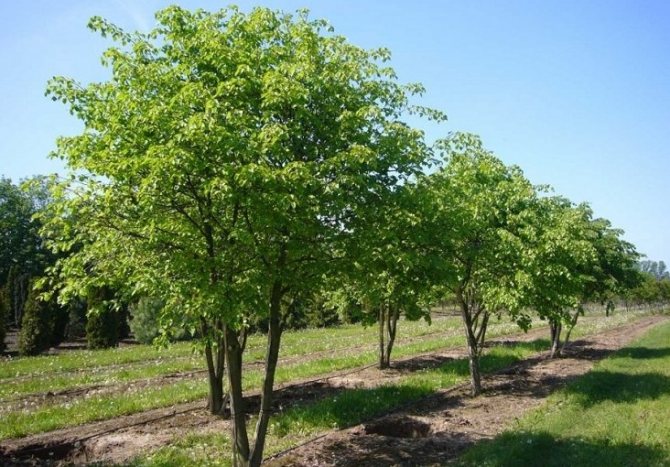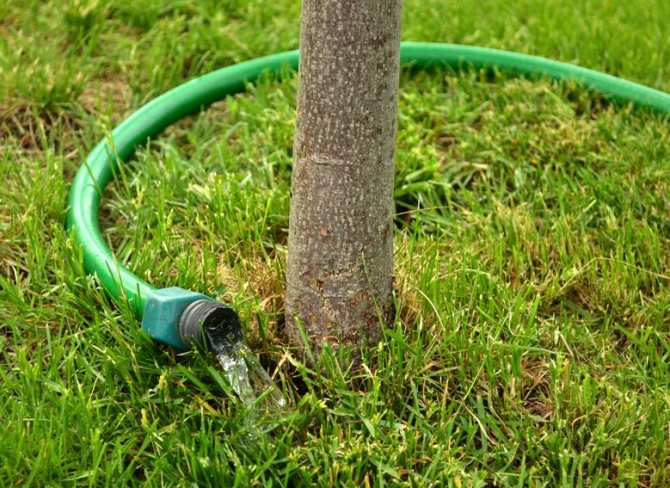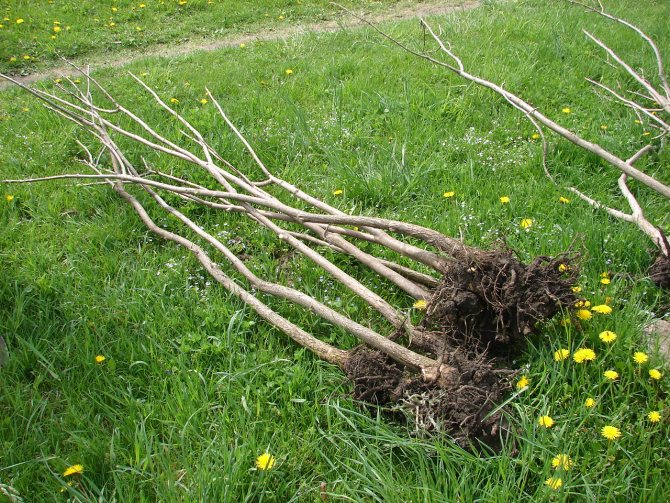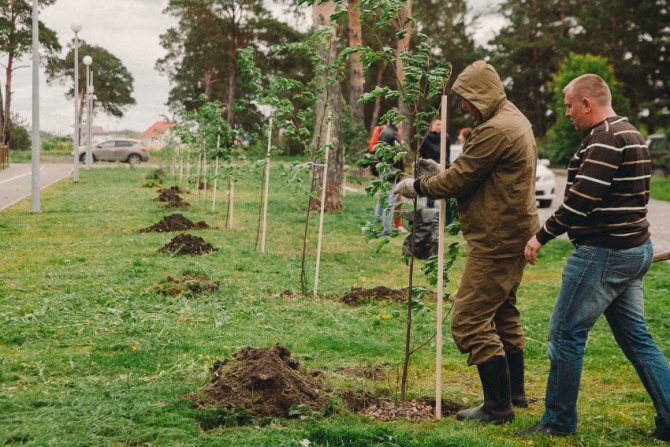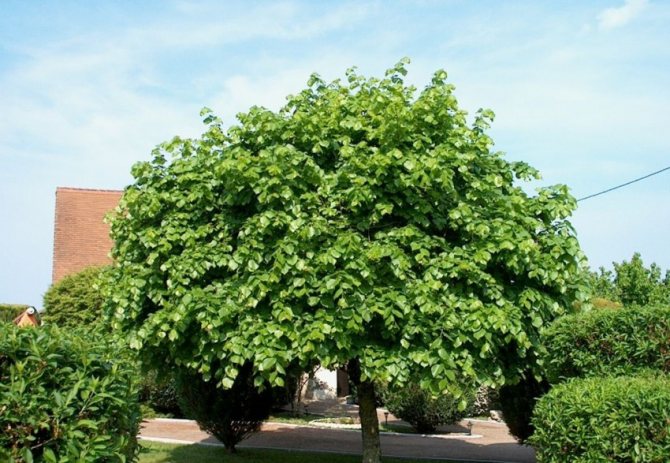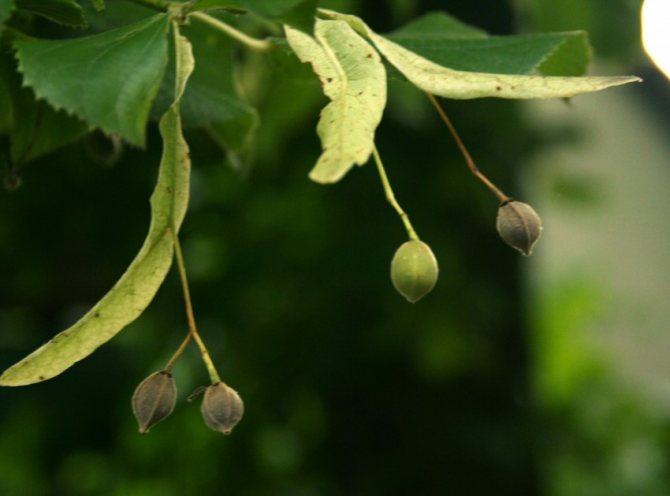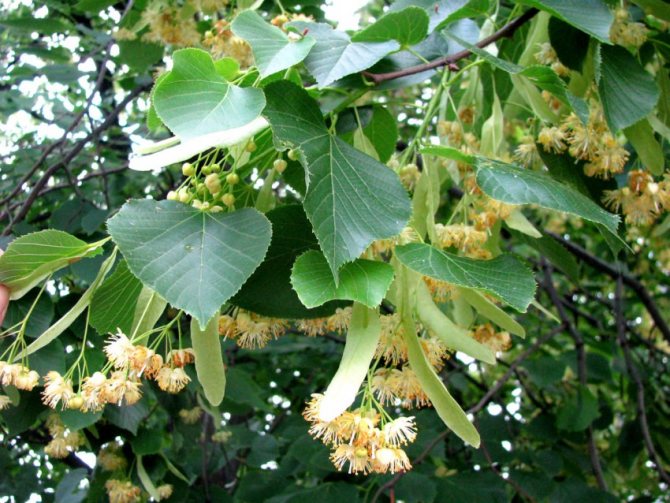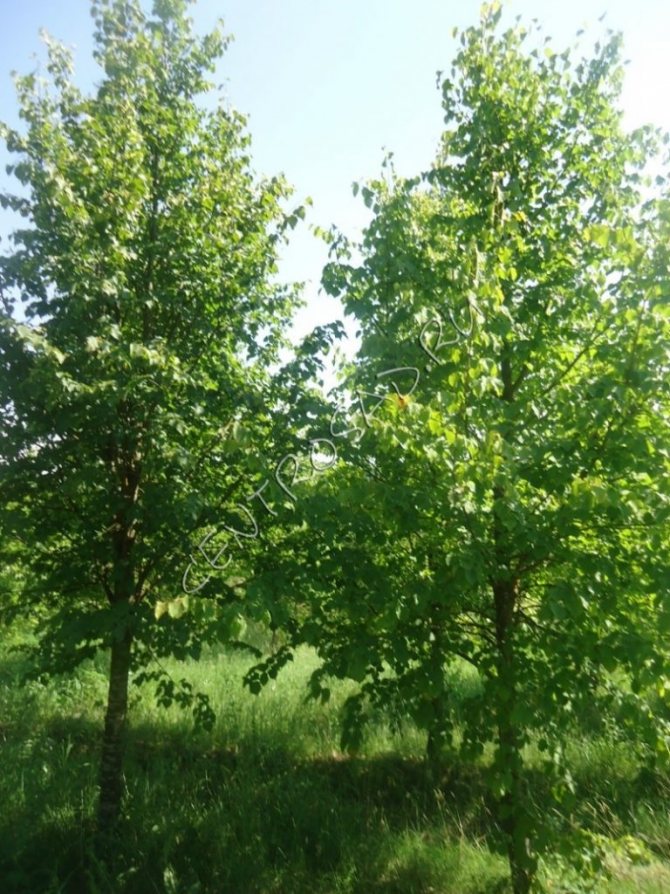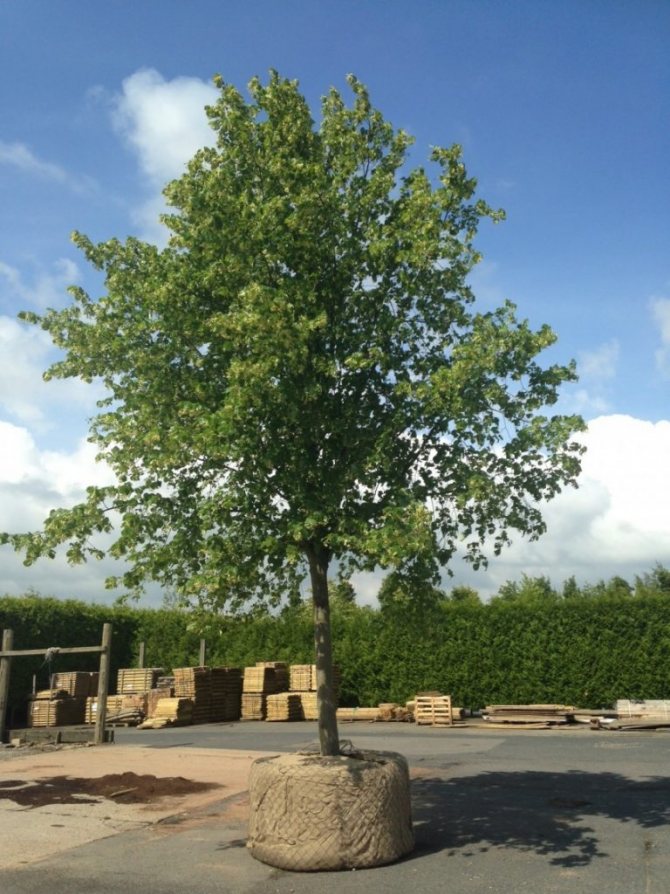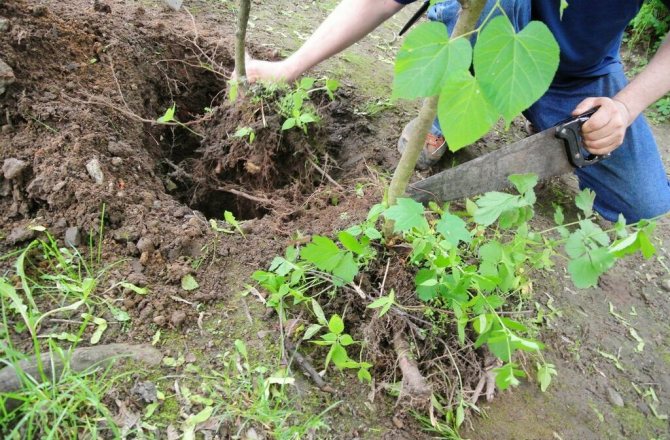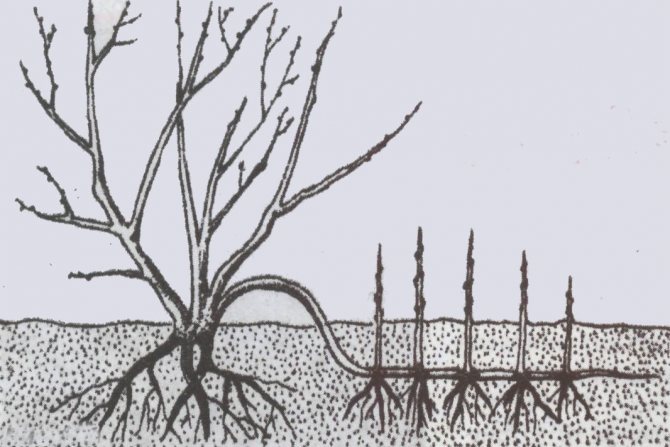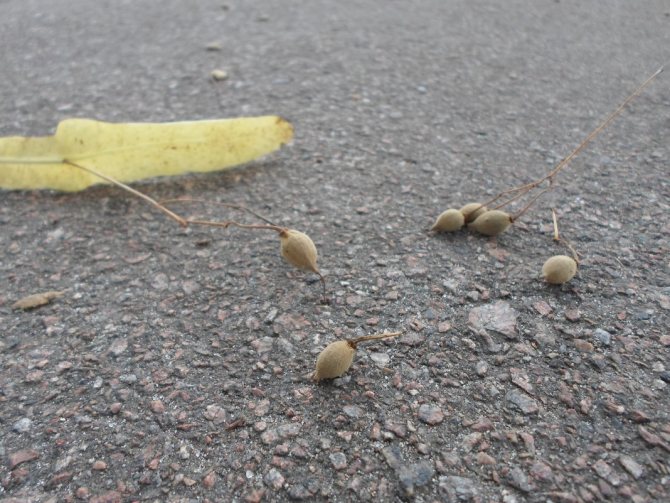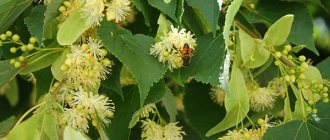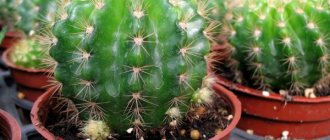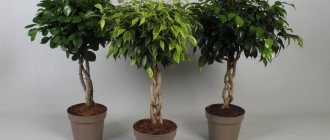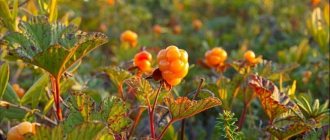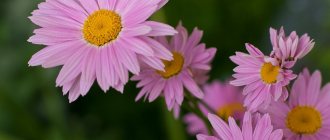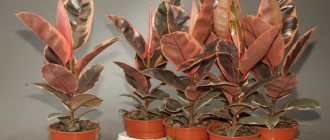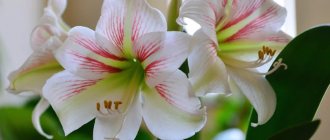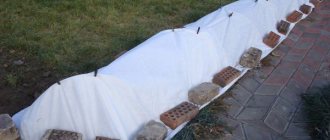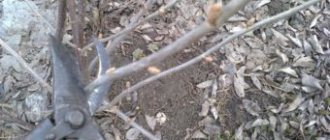Linden is an amazingly beautiful tree that amazes with its healing properties and delights the sense of smell with a luxurious sweet aroma. It is impossible not to recognize her cute yellow flowers, reminiscent of dragonfly wings. The tree has long been known for its valuable qualities, for which it has been respected and appreciated for more than one century. Linden can live for a very long time if it is planted correctly, and for this you need to have an idea of how the tree propagates (by shoots, cuttings, cuttings) in autumn and spring. More on this later.
The main image of the plant
In Russia, small-leaved linden is widespread, the trunk of which can reach up to 30 meters. The crown is always dense, branched with a lot of leaves. Such a lush crown practically does not let the wind through, so it is often used as a kind of barrier in order to create a cozy corner.
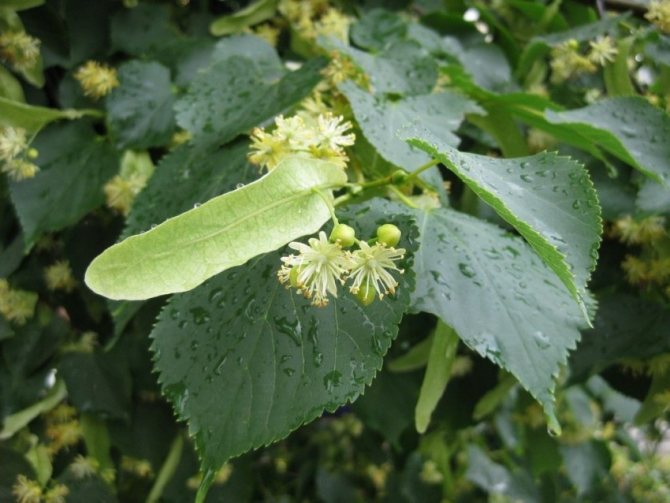
A wild tree growing in unfavorable conditions often takes the form of a shrub. The leaves are small, but some can reach 15-17 centimeters.
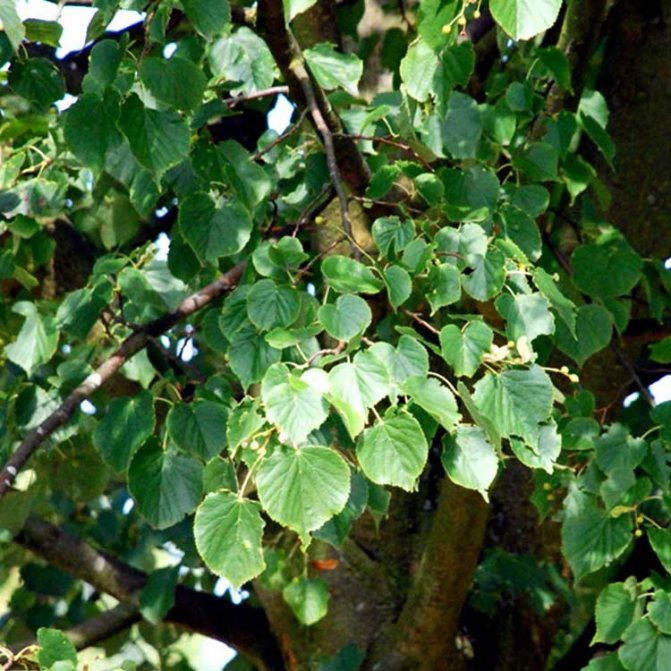

Views
The broadleaf tree formed in temperate climates millions of years ago. The most common in Europe and Asia, there are more than 30 species. It grows in a wild and cultivated form. Different types of lindens bloom from spring to mid-summer. The tree is a long-liver; there are specimens growing for over 500 years. There are large linden plantations on the site of old manor estates, which are more than 200 years old.
- Caucasian linden
The trunk grows up to 40 m, the crown is round, very spreading. Dark red young shoots look picturesque. Found in the Caucasus and northwest Asia.
- Manchurian linden
Often the tree grows multi-stemmed, it rises up to 20 m. The frost-resistant species is widespread in the Far East and in the Amur region.
- Silvery linden
This species is also called felted linden. On the leaves on top there is a gentle downy, below - dense. A tree with a wide-pyramidal crown, high, reaching 30 m. It is found in the forests of the middle climatic zone of Russia.
- Small-leaved linden
In our country, this is the most common type. Usually, when they talk about linden, they mean this type of linden trees.
- Large-leaved linden, or broadleaf
Very similar to small-leaved. The surface of the leaf blade is wider, up to 12 cm.A tree with a tent-shaped crown, from 18 to 25 m wide.It grows faster than a small-leaved one, it reaches 40 m.In a year, the seedling grows by 45 cm, and the crown spreads up to 35 cm. develops better on alkaline or slightly acidic. Distributed in Western Europe in regions with mild winters.
When buying seedlings of Manchurian and broad-leaved linden, they choose those that are grafted onto small-leaved. They develop faster and bloom from 5-6 years old.
Root system
All species of this tree develop a powerful root system, which is based on a rod shoot that penetrates deep into the soil. It reliably fixes the tree and brings additional fertilizing, and developed adventitious roots receive moisture from the upper layers of the soil.
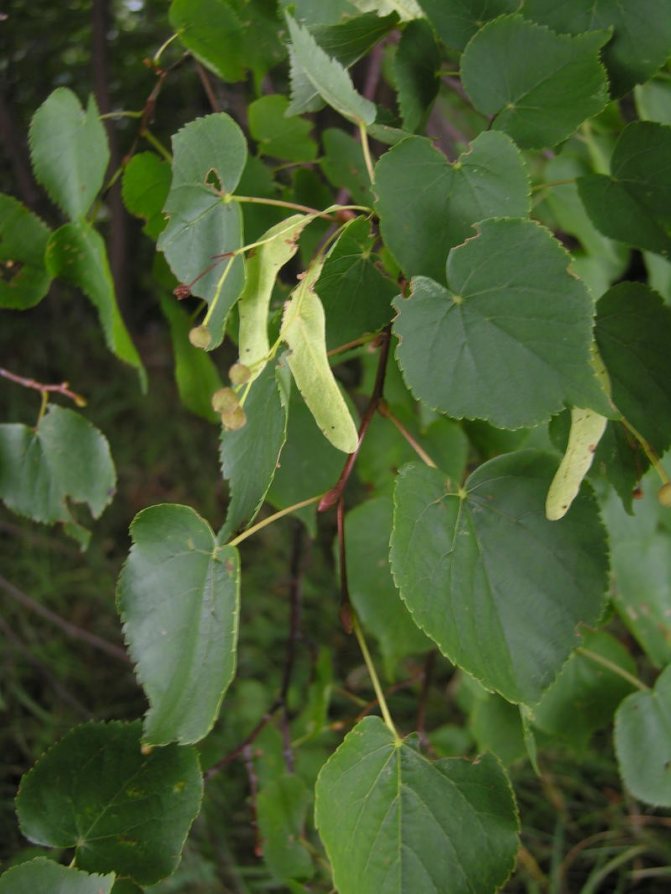

Therefore, it is not difficult to guess how the linden reproduces, because a developed root system is the key to successful tree reproduction.
, beautiful and slender trees are obtained.
Under natural conditions, lindens that have fallen in the autumn season fall on the ground, where they lie for quite a long time.With the onset of winter, the seeds are exposed to cold conditions conducive to the creation of dormant conditions. It is important that the seeds must lie for some time in the cold, since they need to gain strength before germination.
As soon as the first spring rays warm the soil to a sufficient depth, the seeds will begin to germinate.
Seed germination is quite active, especially if optimal conditions are created around. This is what happens in nature. It is possible to grow a linden from it in artificial conditions, thanks to the labor activity of a person. Linden seeds prepared in advance must be placed in rather cold conditions in order to create conditions for real rest. The cold will not allow the seeds to germinate ahead of time. Exposure of seeds to low temperatures is referred to in horticulture as stratification. It is with the help of stratification that fairly strong linden seedlings are obtained.
In order for linden seeds to germinate quickly, they need to be kept for three months in cold conditions, preferably slightly damp. For this purpose, the collected linden seeds are placed in a container where there is a certain amount or moistened river sand. In order to provide free air access to the linden seeds, a little peat is added to the container. Place a closed container with seeds in a cold place.
As soon as spring comes into its own and the soil warms up a little, gardeners plant seeds to get seedlings:
- The most optimal conditions for growing it are the conditions at home, since it is still quite cool outside the window at this time.
- turn out to be friendly and strong if loose, heterogeneous in structure and sufficiently fertile soil was used. Such land can always be found in the garden under fruit and shrubs.
- Before planting, such soil is additionally enriched with humus, sometimes adding sand.
- Before planting, the soil must be well moistened.
- It is not recommended to dry the seeds before planting. In this case, their germination is significantly lost.
- Seeds are planted in small rows, keeping a distance of 15 to 20 centimeters.
- Planting depth of seeds is about one centimeter.
- Having deepened the required number of seeds, they are covered with a small layer of soil and tamped a little.
- To accelerate the emergence of seedlings, the seeds should be covered with a film or other covering material.
- The first shoots will appear in about two weeks. As necessary, produce and monitor soil moisture.
The emergence of seedlings is not always friendly and the same. As soon as the appearance of condensed moisture under the covering material is noticed, it must be removed. This is done so that pathogens do not begin to multiply in the resulting warm and humid environment.
As soon as the sprouts are sufficiently strengthened and gain strength, they should no longer be covered.
During the germination of linden seeds, the ambient air temperature should not be lower than twenty degrees. The seedlings must receive enough sunlight to accelerate the process of photosynthesis.
Measures for the care of linden seedlings consist in the obligatory loosening of the soil layer and timely watering. Three weeks after the emergence of seedlings, they must be thinned out in order to get rid of weak shoots. Then all the resulting plants are planted in separate pots. This contributes to their further strengthening and growth. For this event, you need a soil similar in composition to the one in which the seeds germinated.
When transplanting seedlings, you need to carefully handle the root system, since it is still quite weak and can be damaged.
With the onset of real heat, which occurs during May, the seedlings obtained earlier are planted in an open area. Usually this is the garden.Linden also grows on infertile soils, so it can be planted almost anywhere. It is advisable for seedlings to choose areas for planting with a good fertile layer and lighting. It is worth excluding the direct rays of the midday sun on the linden leaves, as burn marks may appear on them.
Moisture-loving linden is demanding for watering, especially at the stage of seedlings. Therefore, it should periodically and loosen the soil to access oxygen to the root system. There should be no weeds around the linden, as they will inhibit its growth.
As soon as two years have passed since the planting of linden seedlings in the garden, they can be in a previously prepared place of constant growth.
Linden can be planted in the garden, near the house, on the alley and in many other places. Its crown will easily fit into any landscape and will become its decoration. And if necessary, this very linden will be an excellent medicine in the treatment of many diseases.
More information can be found in the video.
Linden is an amazingly beautiful tree that amazes with its healing properties and delights the sense of smell with a luxurious sweet aroma. It is impossible not to recognize her cute yellow flowers, reminiscent of dragonfly wings. The tree has long been known for its valuable qualities, for which it has been respected and appreciated for more than one century. Linden can live for a very long time if it is planted correctly, and for this you need to have an idea of how the tree propagates (by shoots, cuttings, cuttings) in autumn and spring. More on this later.
Where does it grow
In wildlife, the tree is most often found in European states - Hungary, Romania,
Moldova, Bulgaria, south-west Ukraine, Greece and Albania. In addition, there are small groves in the west of Turkey.
Fluffy linden prefers broadleaf forests. It can form vast territories with other plants or completely fill a small section of the forest belt.
It is widely used for planting in city alleys and parks.
The fluffy linden tree is not susceptible to the surrounding landscape. It grows well both in the shade and in the bright sun. Any neighborhood will not affect her, she will not stop growing, she will still flaunt the magnificent forms of the crown.
The plant can grow on any soil, but sandy soils with humus are most suitable for it.
The close flow of groundwater can negatively affect the young seedling. In this situation, the roots can rot or acquire fungal diseases.
Drought is not terrible for an adult tree. But for the young, irrigation of the land matters. Watering linden should be regular, but moderate - so that marshy soil is not created under the tree.
It can be planted both in a lull and in open areas. She is not afraid of hurricanes or blowing drafts. It has a taproot that goes deep into the ground, which holds the ground trunk, preventing it from falling.
How linden reproduces
The plant is almost universal, it can reproduce in any way: by seedling, seeds, cuttings and shoots from the roots, and linden is often propagated by cuttings.
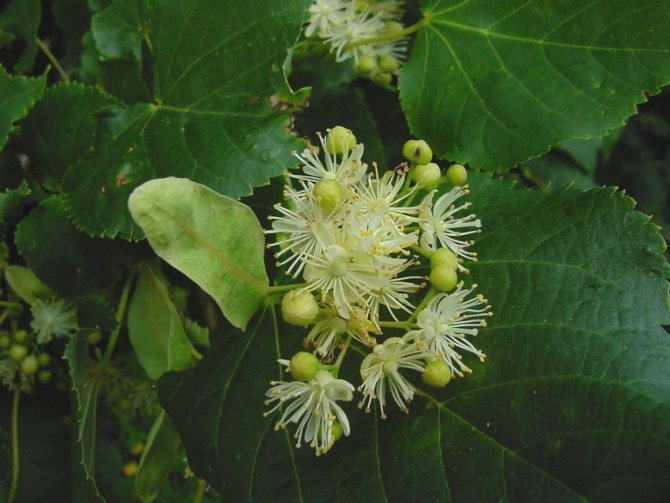

Before planting on your site, you need to prepare a soil for it, consisting of two parts of sand and humus, with the addition of one part of sod soil. A young plant will really like such a soil, it will allow it to develop a strong root system.


Folk recipes
A decoction of dried linden flowers is applicable in cases of croupous pneumonia, rheumatic pains and light-headedness. A decoction of freshly picked flowers in equal proportions with sage helps to get rid of kidney pain, and with the addition of baking soda, it is used for rinsing with sore throat and stomatitis.Lotions and poultices help relieve inflammation in hemorrhoids, gynecological problems, ulcers and edema.
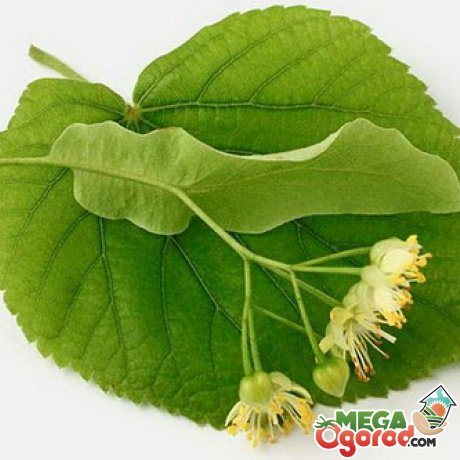

Wood or linden branches, dried and crushed, are used as an adsorbent of toxic substances in food poisoning. Linden charcoal is used for pulmonary tuberculosis, gastrointestinal problems and bleeding open wounds. Tar, obtained from linden wood, is applied to areas of the skin affected by eczema.
The boiled young bark, slippery to the touch, heals burns and abscesses well. For the same purposes, you can use the crushed buds and leaves of the tree. Linden fruits, ground into powder and soaked in vinegar, stop bleeding. Linden leaves placed on the head relieve headaches.
How is reproduction by layering
How to grow a linden tree from a branch? To do this, choose the shortest branches and tilt them into shallow holes dug in advance. After that, the branches are left in this position for 1-2 years so that the shoot can independently strengthen in the soil.
After the shoots will be able to survive after transplantation and will be able to provide themselves with all the nutrients and moisture.
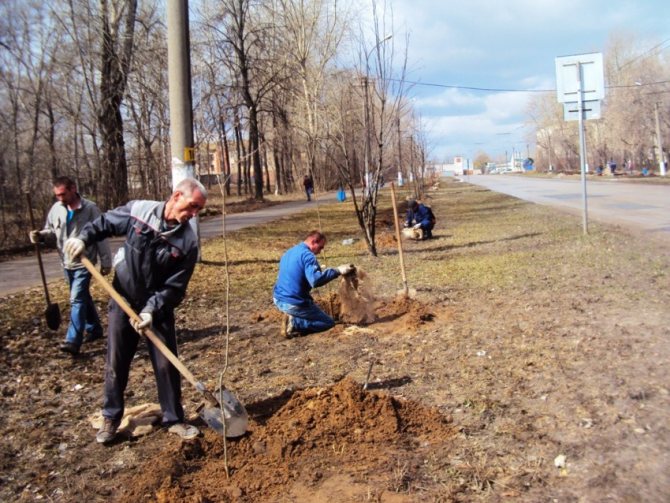

Preparing for winter
Wintering linden, like other garden trees, also requires special preparation from the gardener. Its correct implementation involves the following actions:
- Before the cold weather, the gardener needs to remove the fallen leaves from the tree and burn them, and also inspect the linden branches for the appearance of frost cracks. The detected formations are recommended to be treated with any antiseptic.
- The near-stem circle is covered with insulation during the same period. It is best to use peat or manure as it. With them, the roots of the tree become thicker.
- In the early years, it is advisable to wrap the crown of the tree with dense material. This will protect the branches from frost and snowstorms. When the tree gets older, this measure can be abandoned.
- In addition, it is closer to winter that trees need to be fertilized so that they can stock up on the necessary substances for the winter.
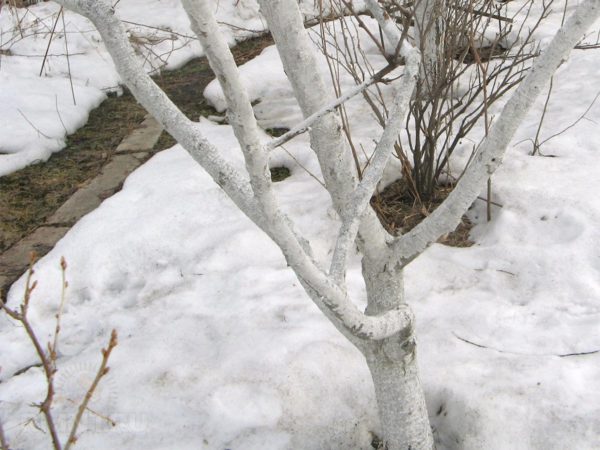

It is possible to carry out all the necessary measures to prepare this variety for winter in 1-2 days. The events are recommended to be held in late October - early November, before the first frost.
With age, the frost resistance of linden increases and by winter it becomes easier to cook it. However, the gardener, while working with this tree, always needs to show increased attention in order to avoid damage to the branches due to frost or improper processing of the plant in the autumn. So, through negligence, you can lose most of the crown.
Reproduction of linden seedlings
Linden is an unpretentious tree that can easily tolerate light damage to the roots when planting seedlings. But it is important to understand that severe trauma to the root system can even kill the plant.
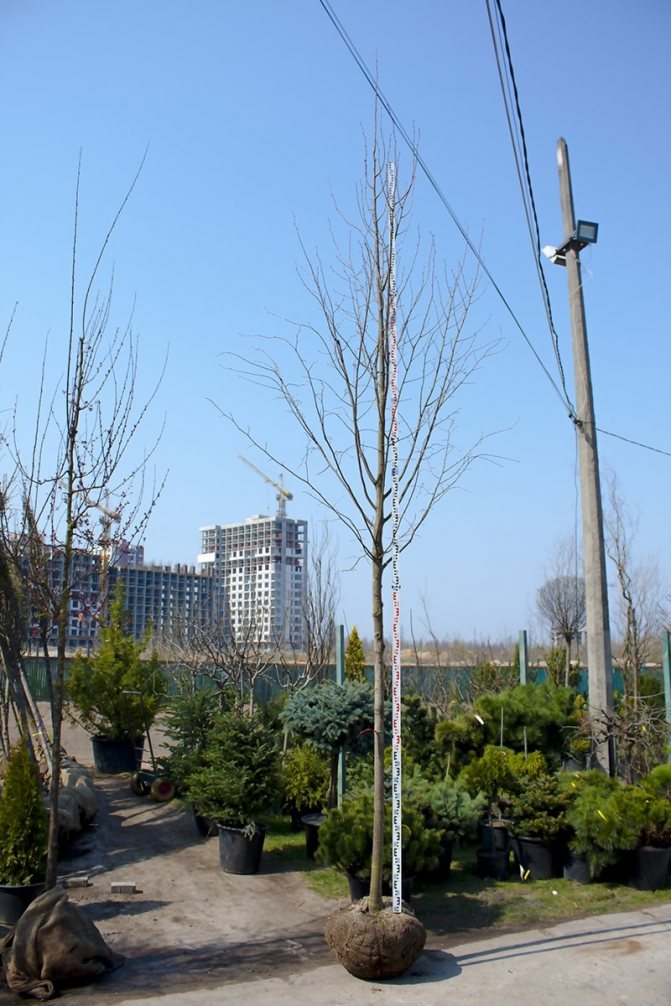

Therefore, gardeners often resort to planting seedlings with a closed root system (transplanting from a pot). This manipulation occurs absolutely imperceptibly for a young tree and does not harm it in any way.
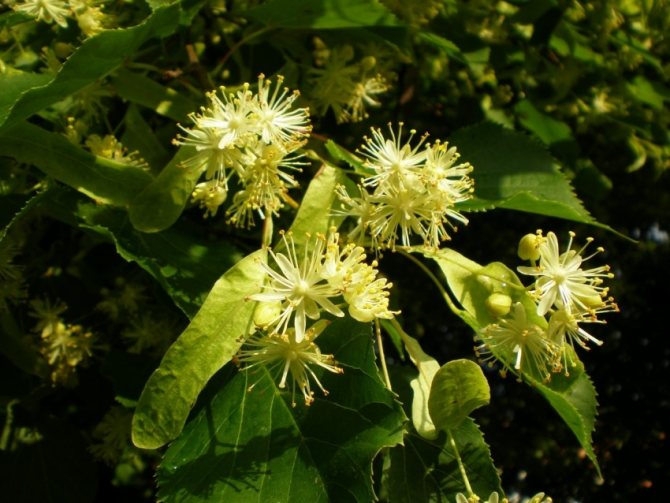

At the same time, the pit should be made quite deep (up to 1 meter), small stones or even broken brick should be laid on the bottom. Be sure to use phosphate fertilizers and a special mixture of soil, sand and humus.
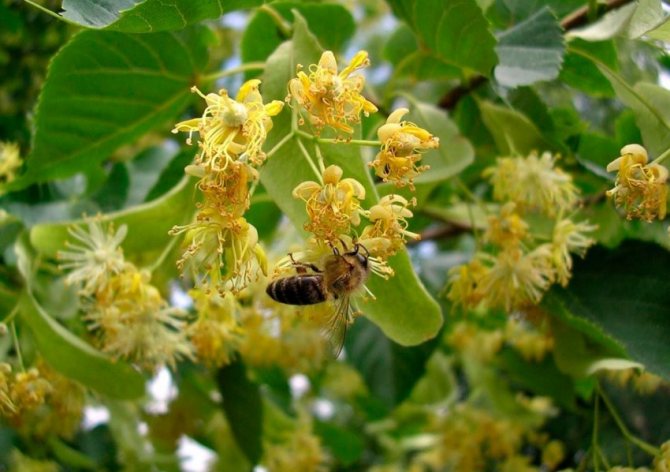

Diseases and pests arising from the cultivation of linden in the garden
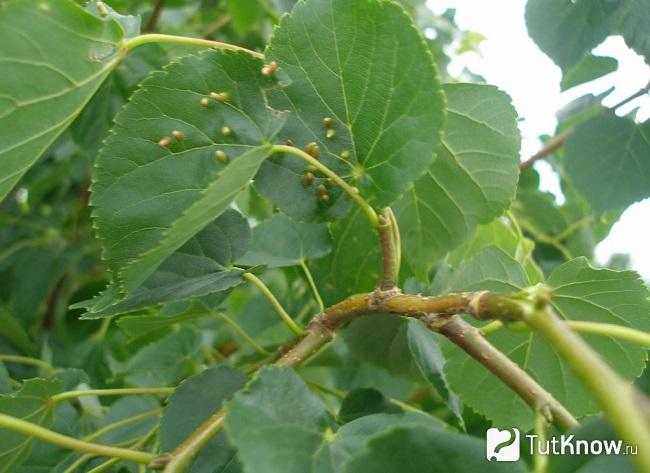

Although the plant is persistent, it happens that if the growing conditions are violated, the following diseases affect it:
- Perforated
and
black spot
, which respectively appear as holes on fruits and leaves, as well as black markings. For the fight, it is recommended to destroy fruits that have fallen to the ground and affected foliage, since these parts can serve as carriers of the disease. All affected plant specimens must be treated with 1% Bordeaux mixture. - White rot
occurs at high air humidity and is clearly visible on the leaves in the form of whitish spots.In order to heal a plant, it is required to treat it with preparations that contain copper, such as, for example, copper sulfate.
Among the pests that can cause trouble for linden trees, there are bedbugs and scale insects, bark beetles and pyramidal scoops, gall mites and tube-worm beetles, silkworms and lilac hawk moths. Linden trees can also suffer from attacks by moths, leaf rollers and goldmails. To save the plant, it is recommended to use insecticidal preparations with a wide spectrum of action, for example, Karbofos, Fitoverm or Actellik.
It happens that problems arise from birds and rodents. The latter spoil the bark in the winter months, so the trunks need to be tied with burlap, roofing felt or use a non-woven material like spandond.
Seed propagation
The longest process, since it will take about 10-12 years for a linden seedling to grow, plant and care for it in the open field. Initially, linden seeds are kept in the cold, placing them in a container with wet sand and periodically moistening them. This period lasts about six months.
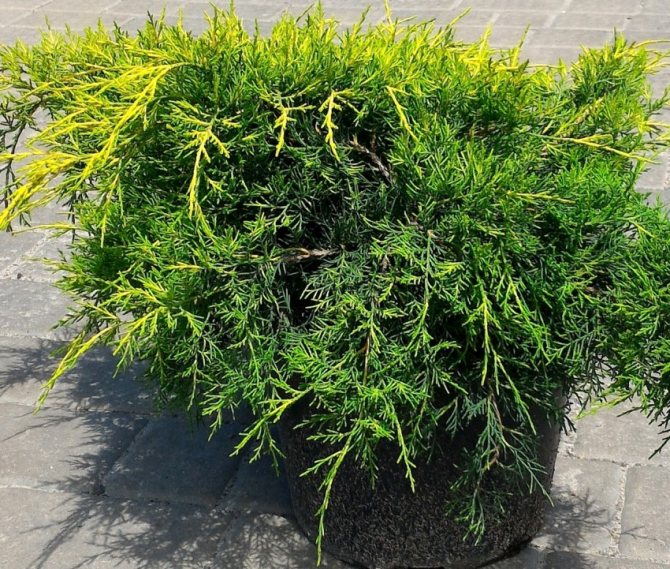

Juniper strickta - description, cultivation, planting and care. Secrets of keeping in the garden and application in landscape design (130 photos and videos)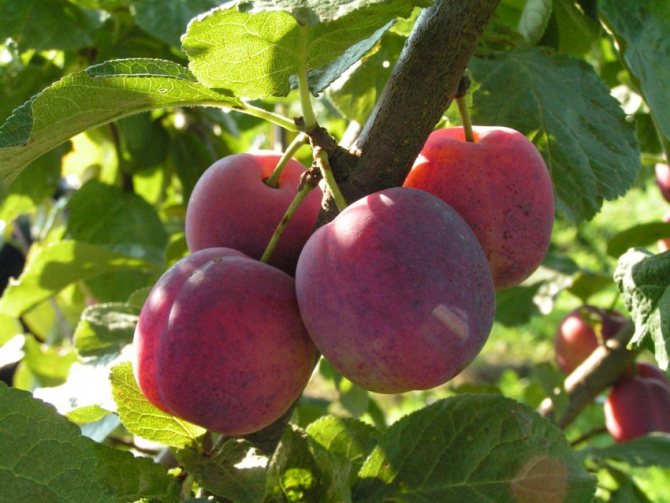

How to grow a plum from a stone: tips and advice on how to prepare the soil, prepare fertilizers and grow a plum at home (155 photos + video)
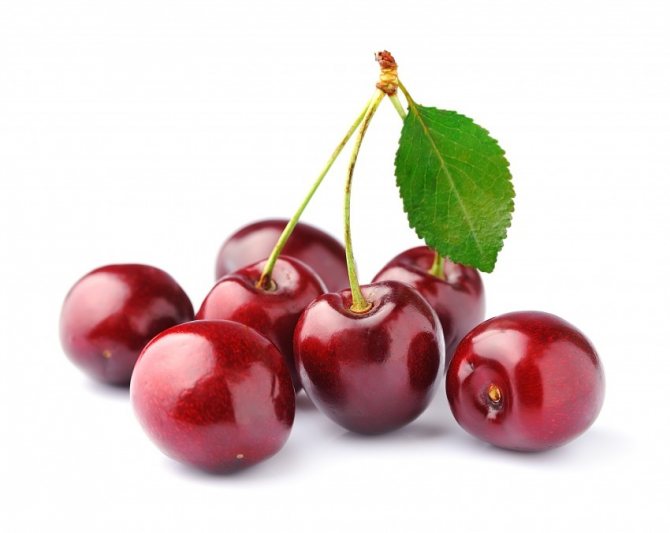

Cherry is jealous: 100 photos, description of the variety, features of planting and cultivation. Care, planting and transplanting cherries
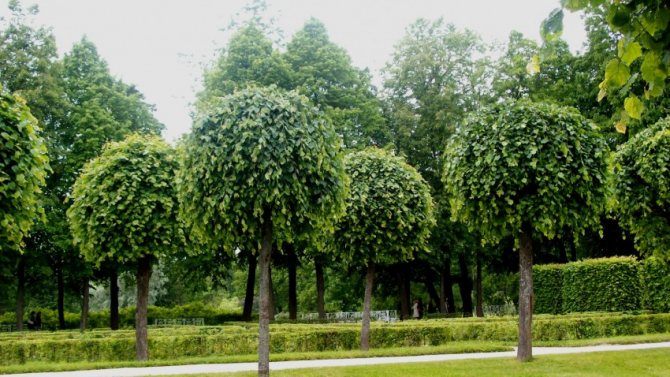

In the spring, when weather conditions stabilize, you can start planting young stock in the soil. The main thing is to constantly monitor them, water, fertilize and close them for the winter.
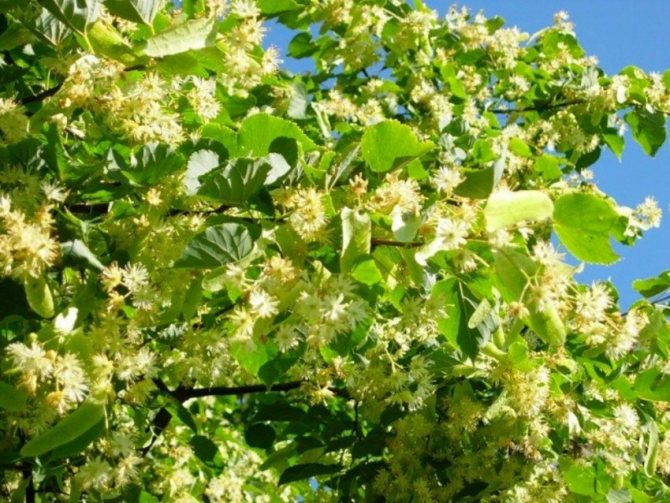

But even despite this, out of 10 planted young seedlings, only 3-4 pieces take root. Therefore, gardeners often germinate young plants at home, as this increases the likelihood of engraftment in the soil by 80%.
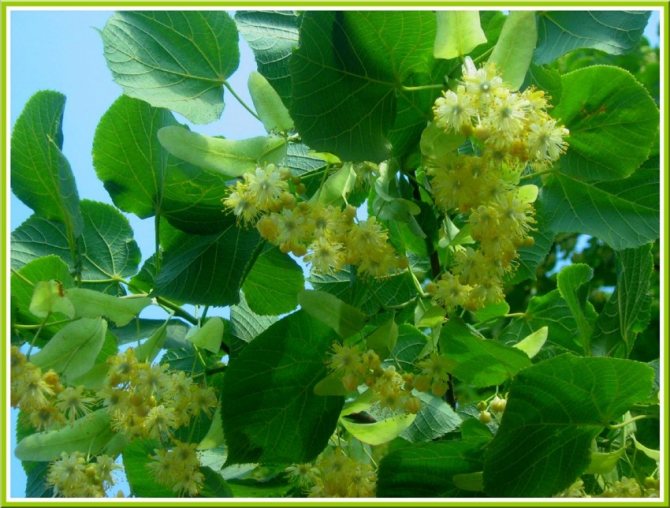

Landing
Saplings that have grown for 2-3 years and have reached a height of 1-1.5 m are transplanted in the fall, choosing damp cool weather.
- For the soil mixture, sod soil, compost or humus and sand are prepared, enriching it with 50 g of superphosphate.
- A hole is dug up to 0.7-0.8 m deep, 0.5 m in diameter.
- Drainage is laid below, and then the finished soil.
- A seedling is placed on the humus, sprinkled with soil mixture and poured with water.
- A peg is installed nearby, to which a seedling is attached.
- Along the perimeter of the hole after planting the trees, they arrange sides to retain water after watering.
- The trunk circle is mulched.
When planting, the root collar of a linden seedling is left above the soil.
Young tree care
After the first year, you can already begin to engage in the formation of the crown. It is important not to cut them too much, 1/3 of a branch is enough. Cultivation can be carried out after budding and temperature equalization outside.
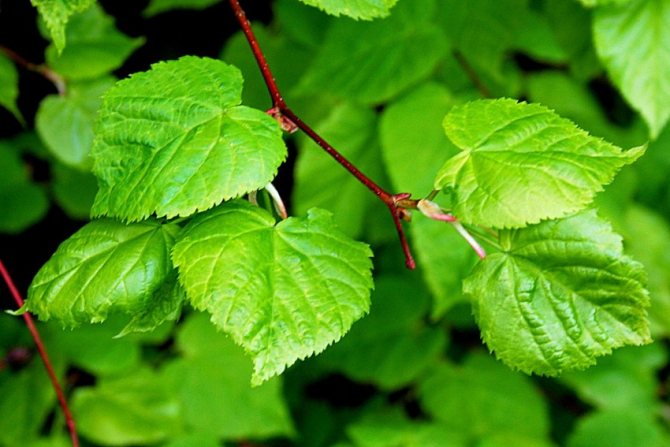

Top dressing is carried out twice a season with a special mixture of cow dung (1 kg), 20 g of urea and 25 g of nitrate. All this is diluted in one bucket of water for 10 liters.
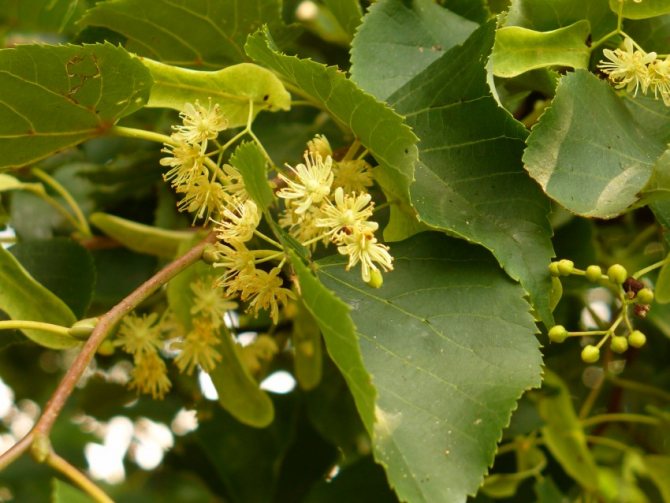

Top dressing is required only for young trees, which are still in a state of root and trunk formation. Every gardener knows how to grow linden, since this is a plant that is so unpretentious that it can grow in any conditions.


Mountain pine Pumilio - features of cultivation, planting, care and use in landscape design (95 photos)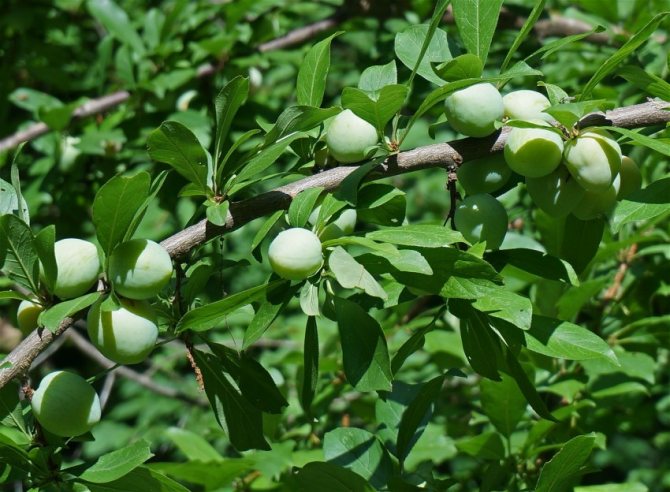

Why plum drops green fruits: common causes, possible diseases and pests (video and 75 photos)
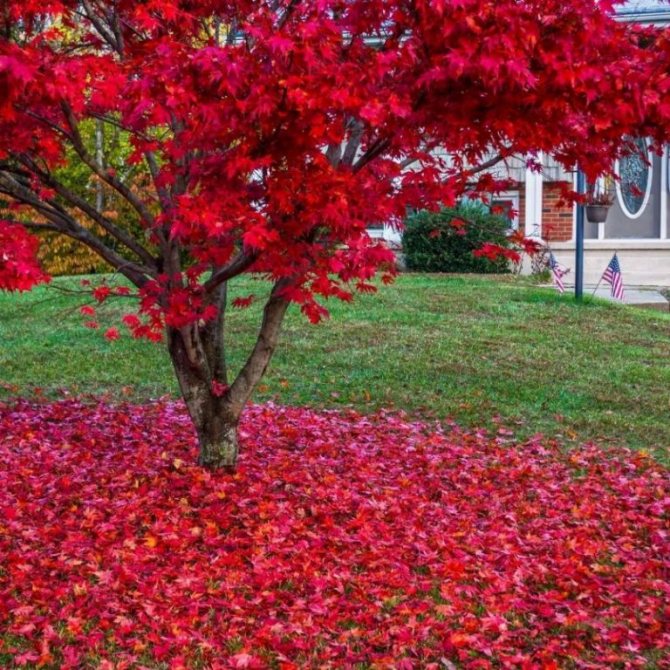

Red maple: conditions of detention, growing in the garden and application in landscape design (115 photos and videos)
